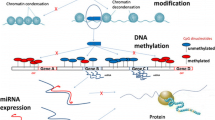Abstract
In the present study toxicity tests were performed in order to determine the toxic properties of four organotin compounds and three heavy metals and to examine the interactive effects of binary metal mixtures on two different test species: the freshwater crustacean Daphnia magna and the marine bacterium Vibrio fischeri. D. magna proved to be more sensitive to metals than V. fischeri. Tributyltin chloride and copper were found to be the most toxic substances on both test organisms. The interactive effects between trimethyltin chloride/copper and trimethyltin/chromium on both test species were investigated and synergistic, additive and antagonistic actions were observed.
Similar content being viewed by others
References
Daphtoxkit, F.M.: 1996, ‘Crustacean toxicity screening test for freshwater’, Standard Operational Procedure, Creasel, Deinze, Belgium, 16 pp.
Day, K. E., Maguire, R. J., Milani, D. and Batchelor, S. P.: 1998, ‘Toxicity of tributyltin to four species of freshwater benthic invertebrates using spiked sediment bioassays’, Water Qual. Res. J. Canada 33(1), 111-132.
De Coen, W. M. and Janssen, C. R.: 1998, ‘The use of biomarkers in Daphnia magna toxicity testing’, Hydrobiologia 367, 199-209.
EPA: 1993, Methods for Measuring the Acute Toxicity of Effluents and Receiving Waters to Fresh-water and Marine Organisms, US Environmental Protection Agency EPA/600/4-90/027F, Fourth Edition.
Fargasova, A.: 1994, ‘Toxicity of metals on Daphnia magna and Tubifex tubifex’, Ecotoxicol. Environ. Safety 27, 210-213.
Fent, K.: 1996, ‘Ecotoxicology of organotin compounds’, Crit Rev. Toxicol. 26(1), 1-117.
Fernadez-Alba, A. R., Hernado, M. D., Piedra, L. and Chisti, Y.: 2002, ‘Toxicity evaluation of single and mixed antifouling biocides measured with acute toxicity bioassays’, Analytica Chimica Acta 456, 303-312.
Hall, L. W., Anderson, R. D. and Kilian, J. V.: 1997, ‘Acute and chronic toxicity of copper to the estuar-ine copepod Eurytemora affinis: influence of organic complexation and speciation’, Chemosphere 35(7), 1567-1597.
Ince, N. H., Dirilgen, N., Apikyan, I. G., Tezcanli, G. and Ustun, B.: 1999, ‘Assessment of toxic interactions of heavy metals in binary mixtures: a statistical approach’, Arch. Environ. Contam. Toxicol. 36, 365-372.
International Standards Organisation: 1982, ‘Water quality-determination of the inhibition of the mobility of Daphnia magna Strauss (Cladocera, Crustacea)’, ISO 6341, March 15.
Janssen, C. R., Heijerick, D. G., De Schamphelaerea, K. A. C. and Allen, H. E.: 2003, ‘Environmental risk assessment of metals: tools for incorporating bioavailability’, Environ. Int. 28, 793-800.
Kim, S. D., Park, K. S. and Man B. G.: 2002, ‘Toxicity of hexavalent chromium to Daphnia magna: influence of reduction reaction by ferrous iron’, J. Hazard Mater. 93, 155-164.
Kungolos, A., Samaras, P., Kipopoulou, A. M., Zoumboulis, A. and Sakellaropoulos, G. P.: 1999, ‘Interactive toxic effects of agrochemicals on aquatic organisms’, Wat. Sci. Tech. 40(1), 357-364.
Kungolos, A., Samaras, P. and Sakellaropoulos, G. P.: 1997, ‘Evaluation of the interactive effect of chemicals on aquatic organisms, using a method based on the theory of probabilities’, in R. Rajar and C. A. Brebbia (eds.), Proceedings of the International Conference on Water Pollution IV, Southampton, UK, pp. 107-114.
Laxman, R. S. and More, S.: 2002, ‘Reduction of hexavalent chromium by Streptomyces griseus’, Miner Eng. 15, 831-837.
Microbics Corporation: 1992, Microtox Manual. AZUR Environmental, Carlsbad, CA, USA.
Mowat, F. S. and Bundy, K. J.: 2002, ‘Experimental and mathematical computational assessment of the acute toxicity of chemical mixtures from the microtox assay’, Advan. Environ. Res. 6, 547-558.
Okamura, H., Aoyama, I., Li, D., Maguireg, R. J., Pacepavicius, J. and Lau, Y. L.: 2000, ‘Fate and ecotoxicity of the new antifouling compound Irgarol 1051 in the aquatic environment’, Water Res 34, (14), 3523-3530.
Sanders, D. H., Eng, R. J. and Murph, A. F.: 1985, Statistics, a Fresh Approach, McGraw-Hill Company, New York.
Sillanpaa, M. and Oikari, A.: 1996, ‘Assessing the impact of complexation by EDTA and DTPA on heavy metal toxicity using microtox bioassay’, Chemosphere 32(8), 1485-1497.
Sorvari, J. and Sillanpaa, M.: 1996, ‘Influence of metal complex formation on heavy metal and free EDTAand DTPAacute toxicity determined by Daphnia magna’, Chemosphere 33(6), 1119-1127.
Thomulka, K. W. and Lange, J. H.: 1996, ‘A mixture toxicity study imploying combinations of tributyltin chloride, dibutyltin dichloride and tin chloride using the marine bacterium Vibrio harveyi as the test organism’, Ecotoxicol Environ Safety 34, 76-84.
Tsiridis, V. and Persoone, G.: 2002, ‘Toxkit microbiotests: new low cost tools for hazard detec-tion/ monitoring in environmental toxicology’, in A. G. Kungolos, A. B. Liakopoulos, G. P. Korfiatis, A. D. Koutsospyros, K. L. Katsifarakis and A. D. Demetracopoulos (eds.), Proceedings of the 6th International Conference on Protection and Restoration of the Environment, July 1-5, Skiathos Island, Greece, Vol. 2, pp. 809-816.
Villaescusa, I., Matas, C., Hosta, C., Martinez, M. and Murat, J. C.: 1998, ‘Evaluation of lead(II) and nickel(II) toxicity in NaCl and NaClO4 solutions by using microtox bioassay’, Fresenius J. Anal. Chem. 361, 355-358.
White, J. S., Tobin, J. M. and Cooney, J. J.: 1999, ‘Organotin compounds and their interactions with microorganisms’, Canadian J. Microbiol. 45(7), 541-554.
Author information
Authors and Affiliations
Rights and permissions
About this article
Cite this article
Kungolos, A., Hadjispyrou, S., Petala, M. et al. Toxic Properties of Metals and Organotin Compounds and Their Interactions on Daphnia magna and Vibrio fischeri . Water, Air, & Soil Pollution: Focus 4, 101–110 (2004). https://doi.org/10.1023/B:WAFO.0000044790.41200.04
Issue Date:
DOI: https://doi.org/10.1023/B:WAFO.0000044790.41200.04




